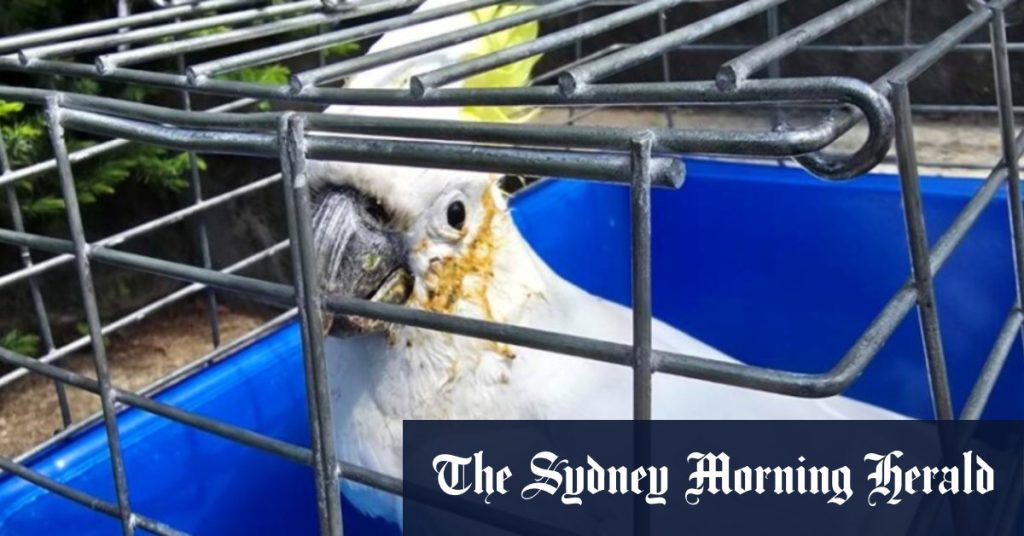There have been two mass poisoning events in Sydney that have resulted in the deaths of numerous sulphur-crested cockatoos. Wildlife rescuers believe these poisonings were deliberate, as more than 20 birds have been found across the Sutherland Shire after consuming food products laced with a poisonous insecticide. Members of the public in Gymea, Gymea Bay, Miranda, and Grays Point have discovered sick or dead birds, with WIRES estimating that 15 were found on September 16 and seven on September 30. Toxicology testing at Taronga Zoo revealed that methomyl, an insecticide used in agriculture that is toxic to both humans and animals, was present in each of the seven cockatoo bodies tested.
The presence of methomyl, a substance rarely used in home gardens, has prompted the NSW Environment Protection Authority (EPA) to treat the poisoning as intentional. Evelyn Anderson-Ho, a volunteer with WIRES, has been heavily involved in rescuing and rehabilitating the affected birds. She describes the impact of the toxin on the cockatoos, noting that initially, they appear to function normally but eventually become unable to cope with the effects. As the toxin causes them to over-salivate, many birds drop from the sky mid-flight, struggling to breathe as they drown in their own fluids. The distressing sight and sound of the birds suffering has made the rescue efforts a significant challenge.
The deliberate poisoning of these cockatoos has raised concerns about the impact on wildlife populations in the area. Cockatoos play a vital role in the ecosystem as seed dispersers and pollinators, and the loss of a significant number of individuals could have far-reaching consequences. In addition to the immediate threat to the affected birds, there is also a risk of secondary poisoning for other animals that may scavenge on the poisoned carcasses. Authorities are investigating the incidents and urging anyone with information to come forward to help identify those responsible for the deliberate poisoning.
Efforts to rehabilitate the poisoned cockatoos have been ongoing, with volunteers at WIRES working tirelessly to provide care and treatment for the affected birds. However, the toll of the poisoning events has been significant, with many birds succumbing to the toxic effects of the insecticide. The emotional and physical strain on the rescuers has been substantial, as they witness the suffering of these iconic Australian birds. As the investigation into the deliberate poisoning continues, there is a sense of urgency to prevent further harm to wildlife and hold those responsible accountable for their actions.
The poisoning of these cockatoos highlights the vulnerability of wildlife to deliberate acts of harm and the need for increased protection measures. The use of toxic substances to target animals is not only illegal but also poses a threat to entire ecosystems and the balance of nature. As the community rallies to support the rescue and rehabilitation efforts, there is a renewed appreciation for the importance of preserving and safeguarding our native wildlife. By raising awareness of the impact of deliberate poisonings on wildlife, there is hope that greater vigilance and accountability can be established to prevent future incidents and protect vulnerable species like the sulphur-crested cockatoos.
Despite the challenges and heartbreak of the mass poisoning events, the resilience and dedication of wildlife rescuers like Evelyn Anderson-Ho and WIRES demonstrate the unwavering commitment to saving and protecting Australia’s unique wildlife. The outpouring of support from the community in response to these tragic events is a testament to the deep connection and respect for our native flora and fauna. As the affected cockatoos continue to be cared for and monitored, there is a collective determination to ensure their survival and the preservation of their essential role in the ecosystem. By coming together to confront the threats facing our wildlife, we can work towards a future where deliberate acts of harm are prevented, and the natural world thrives in harmony with humanity.


